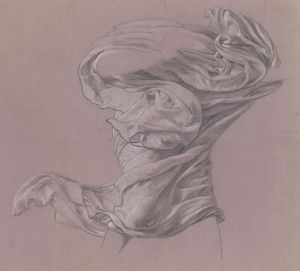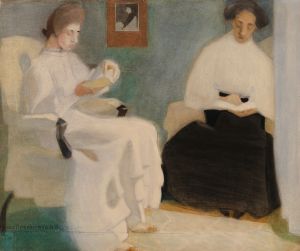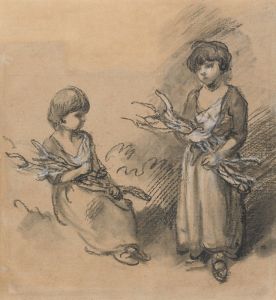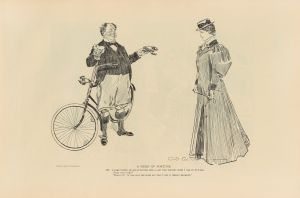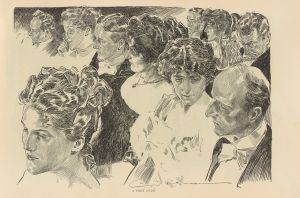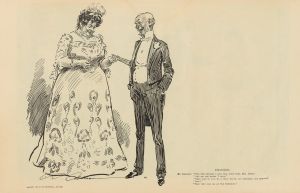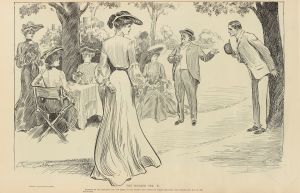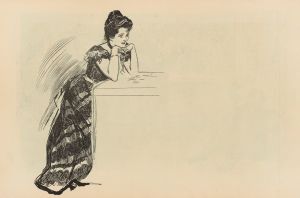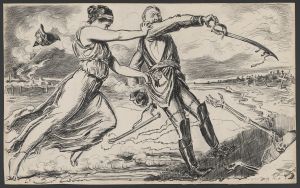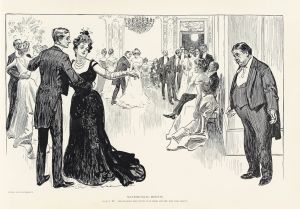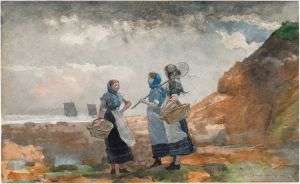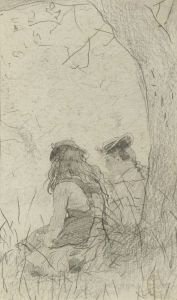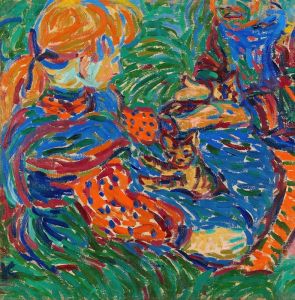
In leap year – The dear girls and the chaperone accustom themselves to the back seats
A hand-painted replica of Charles Dana Gibson’s masterpiece In leap year – The dear girls and the chaperone accustom themselves to the back seats, meticulously crafted by professional artists to capture the true essence of the original. Each piece is created with museum-quality canvas and rare mineral pigments, carefully painted by experienced artists with delicate brushstrokes and rich, layered colors to perfectly recreate the texture of the original artwork. Unlike machine-printed reproductions, this hand-painted version brings the painting to life, infused with the artist’s emotions and skill in every stroke. Whether for personal collection or home decoration, it instantly elevates the artistic atmosphere of any space.
Charles Dana Gibson was an influential American illustrator, best known for his creation of the "Gibson Girl," a representation of the idealized American woman at the turn of the 20th century. His illustrations were widely published in magazines such as Life, Harper's Weekly, and Scribner's, and they played a significant role in shaping the visual culture of the era.
One of Gibson's notable works is the illustration titled "In Leap Year – The dear girls and the chaperone accustom themselves to the back seats." This piece is part of a series of illustrations that humorously depict social norms and gender roles of the time. The concept of a "leap year" is traditionally associated with the idea that women could propose marriage to men, a reversal of typical gender roles. This theme is often explored in art and literature as a playful commentary on societal expectations.
In this particular illustration, Gibson portrays a group of young women and their chaperone seated in the back seats of a vehicle, which was a common setting for social outings during that period. The composition of the illustration reflects Gibson's keen eye for detail and his ability to capture the nuances of social interactions. The expressions and postures of the characters convey a sense of humor and irony, as the women appear to be adjusting to their unconventional roles during a leap year.
Gibson's work is characterized by its precise linework and elegant style, which became synonymous with the "Gibson Girl" image. The "Gibson Girl" was depicted as independent, confident, and fashionable, embodying the changing attitudes towards women's roles in society. This illustration, like many of Gibson's works, offers insight into the cultural and social dynamics of the early 1900s.
The popularity of Gibson's illustrations contributed to the broader cultural movement that challenged traditional gender roles and expectations. His work resonated with audiences who were experiencing the rapid social changes of the Progressive Era, including the women's suffrage movement and the push for greater gender equality.
"In Leap Year – The dear girls and the chaperone accustom themselves to the back seats" is a reflection of Gibson's ability to blend humor with social commentary. Through his art, Gibson not only entertained but also provoked thought about the evolving roles of women in society. His legacy as an illustrator endures, as his work continues to be studied and appreciated for its artistic merit and cultural significance.
Overall, Charles Dana Gibson's illustrations, including this particular piece, remain an important part of American art history, offering a window into the societal norms and values of the early 20th century.





